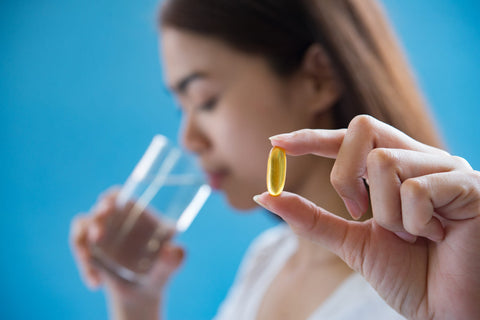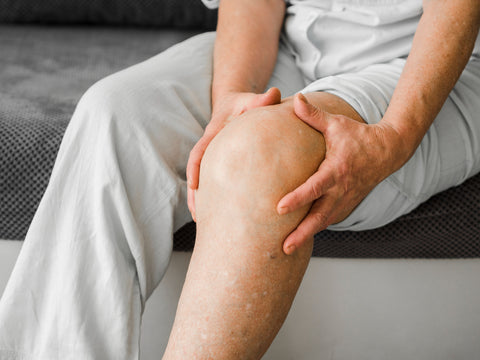Vitamin D, which is converted by the sun from cholesterol on the skin, is regarded as an extremely important health-promoting factor. Apart from being a vitamin, it works as a hormone which can influence thousands of different human genes and every aspect of human health.
PREVALENCE OF THE DEFICIENCY
In cloudy countries, such as England, almost every person is deficient. Surprisingly, also in very sunny countries, the deficiency of this vitamin is often rampant. In India, for instance, 80% of people are deficient (1). It is so because people living there do not expose their uncovered bodies to the sun. In addition, they are also deficient in magnesium without which the sun vitamin can’t be used by the body.
Another reason is that individuals with a dark skin tone require up to six times more sun exposures to maintain normal blood levels (2). The dark skin contains more melanin (pigment) which protects against ultraviolet radiation exposures thus reducing the production of cholecalciferol from cholesterol in the skin.
CONVERSION IN HUMAN BODY
There are various forms of vitamin D in our body. It starts as a cholesterol molecule. The sun converts it to ergocalciferol (D2) on our skin. The liver converts D2 into D3 (cholecalciferol). Finally, in kidneys, with the help of magnesium, it becomes the active form known as D4 (calcitriol).
SUN AS THE SOURCE
In the UK, even during summertime, it is impossible to expose the body to the sun for at least 3-4 days per week to store enough Vitamin D for the rest of the year.
In addition, the made by the sun from cholesterol vitamin, requires up to two days to be entirely absorbed from the skin into the bloodstream. Unfortunately, a bath or a shower water washes away most of the cholecalciferol from the skin.

FOOD SOURCES
There are some food sources of vitamin D, such as fish or mushrooms. However, regular consumption of fish is not recommended due to high levels of toxines. Mushrooms, on the other hand, are often contaminated with dangerous mold. In addition, the concentration of this nutrient in these foods is insufficient to meet our needs.
Cod liver oil seems to be a good natural source. According to the National Institutes of Health, it may provide about 1,000 IU per tablespoon. However, even this amount doesn’t seem to be enough for adults as they need at least 4000 IU daily. Another problem is the unpleasant taste and the fact that one tablespoon of cod liver oil contains about 13,000 IU of vitamin A. It is much higher than the daily safe intake which for vitamin A is set at 5000 IU.
FORTIFIED FOODS
Also, the food products that are fortified are too low to be able to address the deficiency. In addition, they are usually fortified with synthetic vitamin D2 (ergocalciferol) instead of much better cholecalciferol (D3). This synthetic form isn’t as potent and doesn’t last as long in the human body.
RELIABLE TESTING
There are more ways to test for vitamin D but the only reliable one seems to be the 25-hydroxyvitamin D test, also called the 25(OH) D test.
Other types of tests can be misleading showing normal or even elevated levels, despite serious deficiency.
RECOMMENDED DAILY INTAKE
Most experts agree that 4,000-5,000 IU of D3 can be taken daily without checking with a doctor or having a test.
Official recommended daily intake for adults is 200 IU (UK and EU) to 800 IU (US). However, according to the article published in 2005 in the Journal of Nutrition, this amount should be regarded as insufficient. A much higher intake is recommended also on the basis of the fact that a 15-minute exposure to the sun can produce as much as 20,000 IU.
Recent studies suggest that adults should aim at maintaining levels at around 60ng/ml to 80ng/ml. In the case of individuals suffering from heart disease or cancer, it should be even higher (between 80 and 120 ng/ml).
Research results published by Grassroots Health claim that the average adult needs to take 8,000 IU per day. This daily dose is required to elevate levels above 40ng/ml. They believe that only a concentration higher than 40ng/ml can be effective in addressing the health problems associated with the deficiency.
Most experts recommend 4,000-5000 IU a day with first meal. However, since the deficiency of this vitamin is so widespread (especially in the UK), they encourage to take 20,000 IU a day for the first 3 months, followed by the maintenance dose of 4,000-5000 IU daily.
For children under 5, experts recommend 600-1000 IU daily, while 2,500-3000 units per day for ages 5–10.
According to a study conducted in Finland, babies who received 2000 IU daily in their first year of life, had reduced risk of developing type 1 diabetes later in life by 80% compared to those who received lower daily doses (3)!
SAFE UPPER INTAKE
The safe upper limit is 1,000–1,500 IU per day for infants; 2,500–3,000 IU per day for children aged 1–8 years; and 4,000 IU per day for children over 9 years of age, adults, pregnant and lactating women (4).
Please keep in mind that although the safe upper limit for supplements for adults is set at 4000 IU yet it refers to the maintenance upper safe dose. Since almost all people today are deficient in this vitamin, in order to bring its blood levels to normal, initially a much higher dosage of 20,000 IU per day for 3 months is required. After 3 months, the maintenance daily dose of 4,000 IU is recommended.
Equally important is to take supplemental D3 with magnesium (200mg twice daily) and vitamin K2 MK7 (100-500mcg daily). Without magnesium cholecalciferol can’t be converted into its active D4 form, while without vitamin K2 it may contribute to the calcification of soft tissue.

TOXICITY
High vitamin D levels may lead to tissue calcification. However, the toxicity is extremely rare. It occurs from high intakes of more than 50,000 IU daily for a long period of time (over 5-6 months) (5).
Calcification or Toxicity caused by taking mega doses of D3 for a very long time can be prevented if it is taken with vitamin K2 (50mcg per every 1000 IU of cholecalciferol) and magnesium, such as Magnesium Citrate powder (200mg twice daily).
MAGNESIUM REQUIRED FOR THE ACTIVATION
If you are deficient in magnesium (most people are), even mega doses of D3 will not produce any health benefits. This fact was repeatedly demonstrated by scientific studies. Magnesium also appears to alter the sensitivity of tissues to cholecalciferol and helps maintain calcium balance.
In addition, because this vitamin uses magnesium stored in the body it gradually leads to its deficiency (including insomnia, nervousness, anxiety, constipation, muscle cramps, heart palpitations, etc.). This is true also in the case of those who get high doses of this vitamin from the sun.
VITAMIN K2 FOR PREVENTION OF CALCIFICATION
Another requirement for proper absorption of vitamin D is 100–200 mcg of Vitamin K2 MK-7 (Derived from Natto) every day. It not only maximizes the benefits of supplemental cholecalciferol but also prevents the potential risk of toxicity caused by regular intake of high doses.
Vitamin K2 activates a special protein that helps direct calcium to the bones. In this way, it keeps calcium away from the undesirable areas (pineal gland, kidneys and arteries) thus eliminating the risk of calcification of these organs.
INTERACTIONS
High supplemental intake of vitamin A may increase vitamin D deficiency. The lower the level of vitamin A the more cholecalciferol can accumulate in the liver.
At the same time, vitamin A can prevent cholecalciferol toxicity (and vice versa) when high doses of supplemental cholecalciferol are taken for a long time.
CAFFEINE INCREASES DEFICIENCY
Caffeine products (coffee, tea, green tea, chocolate, cola drinks, etc.) can significantly reduce the absorption of cholecalciferol.
RELATED ARTICLES
SOURCES
- Diabetes Foundation of India, 05, 05, 2013
- How Much Sun Do You Need for Vitamin D? | U.S. News (usnews.com)
- Hyppönen, E. et al. Intake of vitamin D and risk of type 1 diabetes: a birth-cohort study. The Lancet 2001; 358;1500-1503.
- https://diabetesjournals.org/spectrum/article/24/2/113/32324/Vitamin-D-and-Diabetes#ref-39
- https://selfhacked.com/blog/vitamin-d-dosage-sources-deficiency-toxicity/
- Image by pch.vector Image by shurkin_son Image by jcomp on Freepik
Any information or product suggested on this website is not intended to diagnose, treat, cure or prevent any medical condition. Never disregard medical advice or delay in seeking it because of something you have read on this website. Consult your primary healthcare physician before using any supplements or making any changes to your regime.




